Orange Sweet Rolls
If you love cinnamon rolls, you’ll love this spinoff from the classic. Sweet orange rolls drizzled with a lightly sweet orange glaze. Yum.
Herein lies my recent, much-loved version of the almighty orange sweet roll, using this divine sweet roll base and a deliciously orange, sweet and buttery filling, taken from a recipe I posted in the past.
I’ve included my how-to-twist-the-rolls below the recipe. You can definitely make them in the classic cinnamon roll spiral shape, but I swear, they taste better twisted.
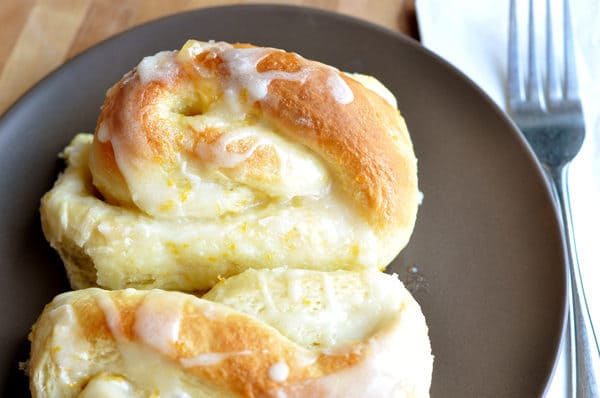
Or maybe that’s just me that’s twisted. Who knows. Either way, these rolls are seriously delectable. From the tender, soft dough to the dreamy light and citrus-infused filling – I adore them.
Don’t hate me, but I’d take one of these any day over a traditional cinnamon roll. I’d prefer one of each, of course, but if I had to choose, it would be orange rolls all the way, baby.
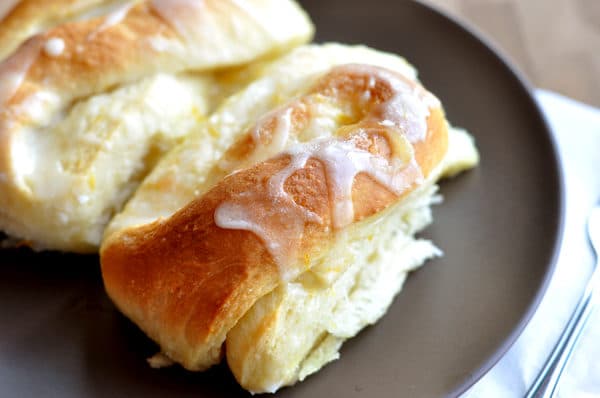
One Year Ago: Steak Hoagies with Mushrooms, Onions and Peppers
Two Years Ago: Meatballs with Cream Sauce
The butter/zest mixture just waiting to be applied to the orange roll dough.
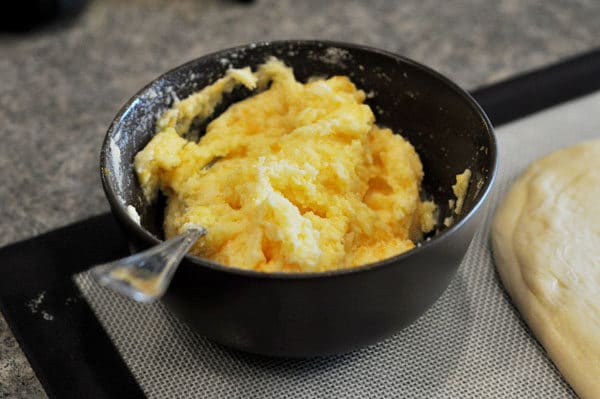
Here the dough is rolled out into a large rectangle.
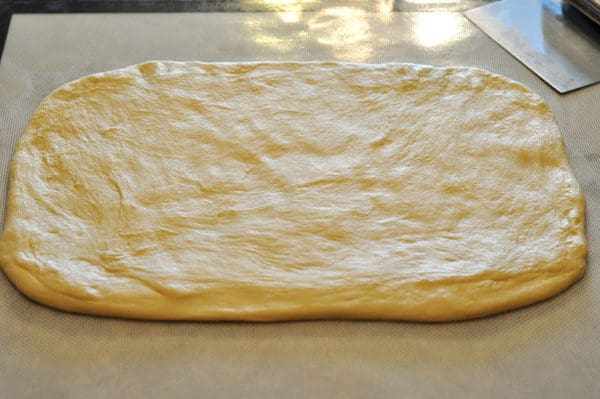
Spread the orange/butter mixture over the dough.
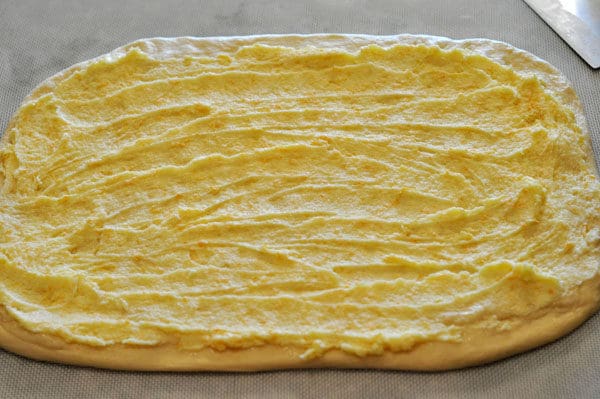
Roll up tightly and pinch the seam to seal.
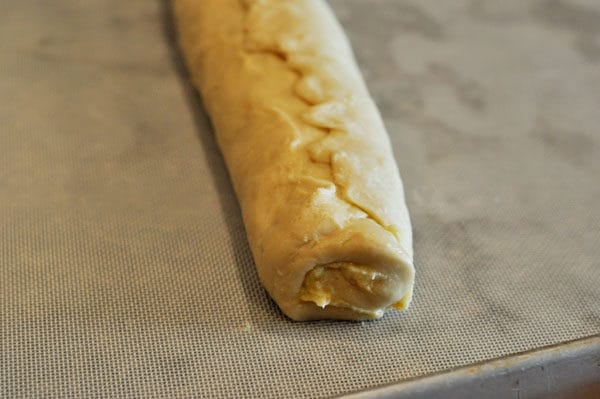
Cut the log into rolls.
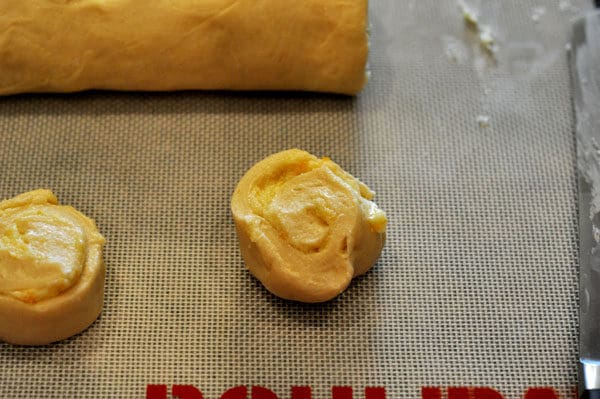
Grasping each side, gently stretch the roll…
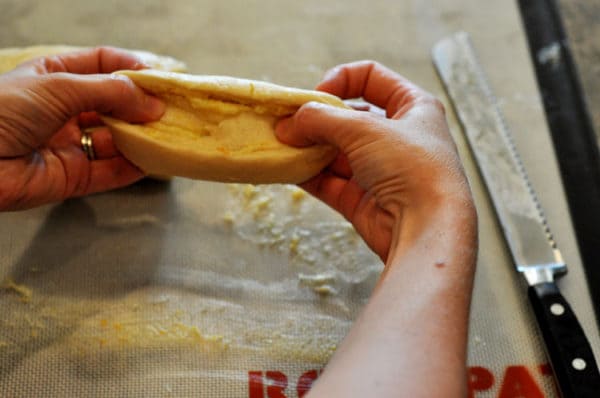
…and twist it before placing on the baking sheet.
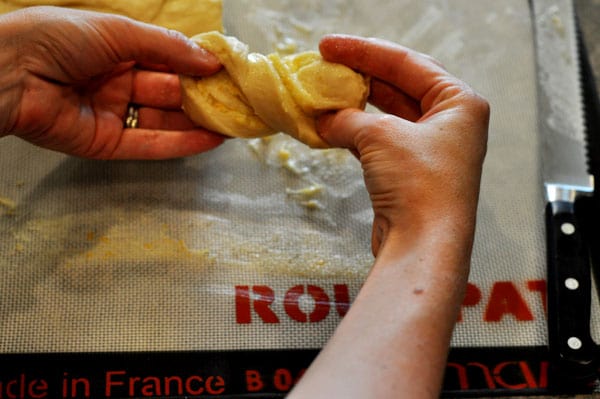
Place the rolls about an inch to two inches apart. Bake and devour!
Recipe Source: My Kitchen Cafe
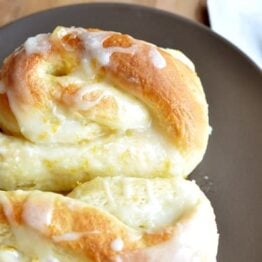
Orange Sweet Rolls
Ingredients
Dough:
- ¾ cup warm buttermilk, (I pour the buttermilk in a glass liquid measuring cup and microwave for 1 minute on 50% power).
- 6 tablespoons (85 g) butter, melted and cooled
- 3 large eggs
- 4 ¼ cups (604 g) flour
- ¼ cup (53 g) sugar
- 2 ¼ teaspoons instant yeast
- 1 ¼ teaspoons salt
Orange Filling:
- ½ cup (113 g) softened butter
- 1 cup (212 g) sugar
- 2 tablespoons freshly squeezed orange juice
- Grated orange rind/zest from two large oranges, reserving 1/2 teaspoon grated rind for the glaze below
Orange Glaze:
- 1 ½ cups (171 g) powdered sugar
- 3 tablespoons freshly squeezed orange juice from about 1 orange
- ½ teaspoon grated orange rind/zest reserved from the filling above
Instructions
- For the dough, whisk the warmed buttermilk and butter together in a large liquid measuring cup. Combine 4 cups of flour, sugar, yeast and salt together in a standing mixer fitted with dough hook (or you can use a large bowl and mix with a wooden spoon or electric handheld mixer). With the mixer on low speed, add the buttermilk mixture and eggs and mix until the dough comes together, about 2 minutes. Increase the mixer to medium speed and knead the dough until it is smooth and elastic, about 10 minutes (knead for 15-18 minutes by hand). If after 5 minutes of kneading, the dough is still overly sticky, add 1/4 cup flour 1 tablespoon at a time until the dough clears the sides of the bowl but has a slight tacky feel when pressed between your fingertips. (See this tutorial for a visual.)
- Place the dough in a large, lightly greased bowl and cover the top tightly with plastic wrap. Let the dough rise in a warm place until doubled, around 2 to 2 ½ hours, depending on the warmth of your kitchen.
- For the filling, combine all the filling ingredients (reserving 1/2 teaspoon orange zest for the glaze) in a small bowl and mix well. Set aside.
- When the dough is ready, turn it out onto a lightly floured counter (I use my trusty roul’pat for this step) and press it into about a 16 by 12-inch rectangle (if you have doubled the recipe, split the dough in half and roll out one half at a time). Gently brush the filling mixture over the rectangle, using an offset spatula or rubber spatula.
- Lift the longest edge closest to you and begin rolling the dough into a tight log. Pinch the seam closed and roll the log so it is seam side down. Using a serrated knife, slice the log into 12 evenly sized rolls,more or less. You can slice them thinner or thicker as you like. For a traditional cinnamon-roll-look, arrange the rolls cut side down on a lined or lightly greased baking pan. If you want to try the twist method (see the pictures below), one at a time grab each sliced roll and holding on to either end simultaneously pull and twist the roll into a figure eight and place it on the prepared pan. Cover the rolls with lightly greased plastic wrap. Let the rolls rise in a warm place until doubled, 1 to 1 ½ hours.
- Bake the rolls at 350 degrees for 22-25 minutes, until the rolls are lightly golden on top and cooked through. While the rolls are baking, mix together the glaze ingredients. Drizzle the glaze over the warm rolls.

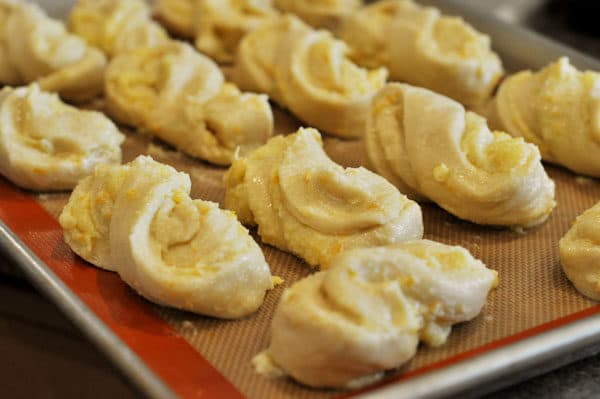
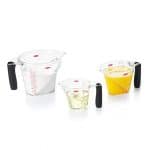
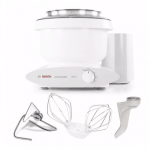
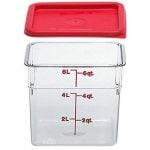
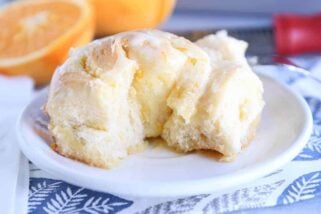
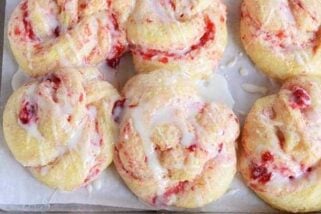
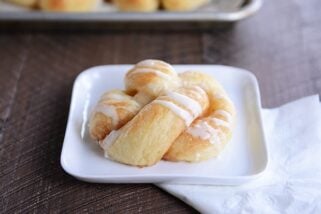
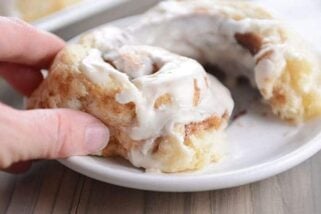
This is an awesome recipe! Made it for the first time today and the buns are disappearing fast.
Just made the second batch after multiple requests. Turned out great again! After reading some comments I have some tips:
* The figure 8/twist is pretty but cooking them like cinnamon rolls keeps the filling in place (and that beautiful buttery filling carries so much flavor!).
* Re: dough not rising for some–watch the temp of your milk (too hot kills the yeast) but also make sure you knead the required amount (or very close to).
I have a pic of my second batch on twitter @dougthecoach
I have NEVER made a homemade roll and these turned out perfectly. We had a very “Mel” Christmas with 4 of my meal items coming from this site.. Three I had never tried before… dangerous Christmas decision! We’re a family of eight, so the pressure was on! I was elated that every item was spot on. And I mean elated!
These rolls were NOT overly gooey or messy for us. I did refrigerate the filling before putting it on per some comment suggestions. My oven and pan were clean and fine. I did line my pan with parchment paper. I made the dough, filling and glaze the day before. I let the dough rise on top of my oven set to 350 and it doubled in the time stated. Filled, cut, and twisted the dough in the evening. Covered, refrigerated over night, then set the twists out in the morning to rise until double. Not all of them doubled in size but they all cooked up fine and tasted wonderful. Goodbye years of canned orange rolls for Christmas brunch!
I served these with Mel’s healthy egg and veggie cups (We call them mini fritattas) that you make in muffin tins, but I used crumbled bacon and sharp cheddar. Perfect easy protein to make ahead and warm up to serve with something so sweet and yummy like these rolls!
Thank you Mel for having such trust-worthy-enough-for-Christmas-day recipes.
Made these today, followed the recipe exactly but the dough didn’t rise normally. I popped it in a warm oven, helped a bit. I went ahead with filling and second rise. They came out tasting wonderful, but the rolls are heavier in texture, not usual roll texture. Not sure what I did wrong…but might try it again in future.
Made these today, followed the recipe exactly but the dough didn’t rise normally. I popped it in a warm oven, helped a bit. I went ahead with filling and second rise. They came out tasting wonderful, but the rolls are heavier in texture, not usual roll texture. Not sure what I did wrong…but might try it again in future.
Think I could use this filling butter part for your new butter pull apart bundt bread? And put glaze on top??
I think so! Definitely worth a try!
Just skimmed more comments..! I will prep ahead. THANKS!
Could I prep these ahead…? Hoping for a yummy Easter morning!
I love Mel’s recipes (and everything about her, really! 😉 but unfortunately this recipe was a flop. My dough didn’t rise or turn out particularly well but the bigger problem is the filling melting out all over the pan. It left very little in the actual rolls and turned into a burned crisp of butter and sugar on the bottom of the rolls. So, save your time and find another orange roll recipe or make something else wonderful from Mel’s site!
My husband said these were perfect and tasted better than a donut! High praise for a man that doesn’t have a sweet tooth. These are so good I think we found our new Christmas morning sweet treat. Thanks again Mel, your recipes are amazing!
Thanks, Rebecca!
Ive made this recipe several times, but i always run into some problems. first off, the dough refuses to rise, and when ever I bake these rolls the filling bleeds out every where, my pan is covered in burnt candied orange sugar while the rolls themselves are empty. Ive even tried baking them like traditional cinnaon rolls, only to end up with the filling bleeding out into the bottom of the pan and having dense rolls with the bottoms soaked in orange solution. Have you ever run into these problems? do you have any suggestions on how to prevent them?
Hey Esther, my filling bleeds out a little, too. Chilling the rolls before they bake might help a little.
I used a bread machine on dough cycle. I put the ingredients in the machine bowl in order as instructed by manufacturer: all wet ingredients, then flour, then sugar and salt around the edges, then poured the yeast into a well in the middle of the flour. I pushed the dough cycle button, but after the entire dough cycle signaled as finished I left the dough in machine an extra 1/2 hr for more rising.
I formed the rolls as instructed and then let them rise for 1/2 hr. Baked as above.
Turned out great. I cut them a little thin, so decreased temp to 340. Cook time was less than stated even with lower temp. Will cut the recommended width next time.
Bread machines are wonderful! I only use it for mixing, kneading, and first rise, which is the dough cycle. Usually the whole dough cycle takes 2 hrs., including the extra 1/2 hr. Then, I do the second rise in loaf pans or make rolls using any bread recipe needing 4+ cups flour.
I made these for my family for Valentines day – LOVED them! At first, I couldn’t decide between many online Orange Roll recipes, but my daughter chose these, by the pics, and I am sure glad she did. Some of the orange filling got caramelized all over the rolls and pan – so delicious! And, the glaze, although not even necessary for deliciousness, was just the right amount to drizzle over, not drowning them. Can’t wait to make again!
These look drool worthy! I love orange rolls & have made a different version, with a sticky orange syrup in the bottom of the pan for years. They actually started out as lemon nutmeg sticky buns, but morphed into orange nutmeg.
Have you ever added nutmeg to your orange filling? Try about 1 tsp of nutmeg in the filling.
Yum!
I have been making these Orange Rolls (wearing my Mel’s apron) for Christmas Brunch for at least 5 years. Every year when I ask my SIL what she wants for Christmas, she says Orange Rolls! What isn’t eaten at Brunch she takes home for later. So, I can’t say how they are warmed up because I never have leftovers!
Glad you love them, Karen!
These are the best sweet rolls on the planet. I’d choose these over cinnamon rolls any day. Making them for my dad right now for his birthday because they are his favorite treat. The dough doesn’t have any stickiness even after only 4 cups of flour. I hope they aren’t too dry. I I am trying them with 2 cups bread flour and 2 cups all-purpose flour. Love love love these.
Hi Mel!
I love your website. I came looking today for something I could make for an upcoming baby shower and these orange rolls look like just the ticket. The shower is at 10am on a saturday and I’m hoping to make the rolls the night before and then finish with the orange glaze and baking the next day. Any tips on how to do this? Or best suggestion for making these ahead. Thanks so much
Hey Amy – if it were me, I’d make them, shape them, and put them in the fridge (on the sheet pan, covered with greased plastic wrap) over night. Then take them out a few hours before you want to serve them, let them come to room temp and rise and then bake them. Does that help?
My whole family loved these! You can’t go wrong with any of your recipes. I made half twist and half regular cinnamon roll shape. I preferred the cinnamon roll shape a lot more.
When I try to copy and paste your wonderful recipes to my computer, your website will not allow me to. I love your recipes but not enough to write them all out by hand.
Why don’t you allow people to copy and paste to our file for later use???
Hi Mary – sorry you are having trouble. I haven’t had issues copying and pasting the recipes – they should copy and paste just fine. What browser are you using? I can help troubleshoot the problem for you.
Mel, thanks so much for your great recipes,photos and videos. I just started baking in February of this year and have learned so much from you.
Your orange rolls, although all the filling came out and overflowed the baking sheet, were outstanding in flavor. I used blood oranges that grow here in Airizona. Unusual color and very tasty. My wife thought better than cinnamon buns.
Did I do something wrong to make the filling all come out? I double checked the quantity of butter and all the ingredients. My only hesitation of making them again is cleaning up the oven!!
Hi William – no, I don’t think you did anything wrong. These orange rolls are pretty oozy with the filling. Next time you could try cutting down a bit on the butter in the filling if you want it to stay put a little better or use a deeper baking pan. Sorry about the disaster in your oven!
Have you ever used orange marmalade for these? In place of the orange juice…I have some in the fridge to use up and it seems like it could be used. Just curious.
I haven’t, Rebecca – but I think a variation like that would be tasty.
I just have to say before I found your website, my bread making skills were absolutely brutal. I have tried these rolls, your buns and the monkey bread. With my trusty KitchenAid, it has been nothing but success! My cheese french rolls are right now rising to have with chicken stew and look fantastic..again! Thank you so much! You have made me a bread making queen!
Love this, Patti – way to go!
Have you ever made these using half wheat flour and half white? I’m curious if it changes the flavor and texture to much!! Or if you should just leave it as is.
Yes, I have – the whole wheat flour (I usually use white whole wheat which is lighter than red whole wheat) gives them a slightly different texture and they aren’t quite as ethereal and light as with 100% all-purpose flour but they are still delicious.
This recipe made 12 large orange rolls in an 11x15x1 pan. Turned out very nice!!
Part white/whole wheat flour made them too ‘heavy’, so on next try I used: 1/2 c. quick oats + 4 c. unbleached flour and let them raise a little longer.
Half the butter, half the sugar, 1 T. orange juice, same amount zest for filling…….still sweet enough with the glaze.
Reduce sugar to taste / add 3/4 cup Smucker’s Sweet Orange Marmalade to filling –
what do you think about that ? Just found your site and have spent all afternoon
on it.
Sounds like a good plan, Janice!
These are so good! I made them as written and then the next time, I tried it out as monkey bread. Great both ways, but we did prefer the rolls. But! It does work great as monkey bread! I made it Saturday night, put it in the fridge after the first rise, and then let it rise Sunday morning before church. Oh, I mixed the butter and orange juice together to dip it in. Anyway! It’s great! We loved them! Thanks for the recipe. 🙂
I finally made these after viewing the post and comments several times. We are in the midst of a blizzard in CT, so I thought it was the perfect day for these. And did they deliver! Really tender, lovely sweet orange filling, and a delicious glaze. I love how the recipe only made 12, perfectly enough for my family of four. I am happy to find a yummy alternative to cinnamon rolls. Thanks Mel.
Oh, thank you for an orange roll recipe that doesn’t use orange marmalade! Exactly what I was looking for!
I’ve made these the last 4 Christmas’ for my SIL. She requests them every year and takes home any leftover rolls. When I asked her if she wanted Orange Rolls again this Christmas she was shocked that I had to ask!
If you are looking for a great tasting treat for your Christmas buffet, look no further. These are the BEST!!!
I have been obsessing about making these for weeks. Today was the day. I placed them in a 9″ parchment lined cake pan, and they baked up really tall! I made an Orange Cream Cheese frosting, that melted temptingly as soon as I took these out of the oven. Holy Cow! These were super tender, these were super good. Thank you for sharing this recipe. It’s a keeper.
I’ve been looking at this recipe for awhile and finally made them on the weekend. I made them up in the evening and put in the fridge overnight to bake in the morning. They came out perfectly ( with only a little bit of filling oozing out). I’m pleased to find that using australian measuring cups didn’t effect the outcome although apparently there is a difference in volume.
Hi Mel,
I just made your sweet rolls and they came out wonderful! What a great recipe for yeast dough! I can’t wait to check out your entire blog. I have a feeling I’ll be baking a lot! 🙂
Hi Mel,
I’ve just recently “found” you and have tried several recipes already with great success. Thanks for getting me out of my rut and trying something different. Your pics are a big part of the attraction for me – great job! I’m wondering if the orange rolls could be done “monkey” bread style (by melting filling and rolling balls in the mix before placing in bundt pan?) I serve at functions and like to have a couple of options.
Hi Wendy – I think the idea to make the orange rolls as monkey bread is actually brilliant! If it were me, I might not use all the sugar mixture…but then again, maybe I would. Clearly it needs some experimentation! Let me know if you try it.
How many tbsp.’s would the zest amount to?
Melanie – probably about 1 1/2 tablespoons, more or less.
Made these yesterday and they’re already gone! 🙂 I, too, noticed that the filling “runneth over”. It looked like the rolls were sitting in a buttery/orangey/sugary goop a quarter inch deep. But once I removed the rolls from the pan, it wasn’t bad, and the filling had only filled up the spaces between the rolls and corners of the pan. The bread baked perfectly and my family adored them. Will certainly make again.
p.s. and I have to agree with your twisty method tasting better than regular rolls. Don’t know how it works, but it tastes better. 🙂
Made these and took them on a trip! Turned out fluffy, moist, pillowy and delicious! Seems there was a little too much filling for me (melted out all over the place), but they were so outrageous I seem to have forgotten that. Anyway – will CERTAINLY make again.
I screwed up… alot
Hi, I have lost this page one month ago, suddenly I found it last nigth. I love this recipe. I will tell you when I will do it.
Hugs.
Can these be made the night before & baked off in the morning?
Alex – sure. Just allow extra rising time in the morning to account for the refrigerated dough.
yum~O
Hi Mel, thanks for posting such a great recipe. I made this today and it came out great, I will be trying this again but with less sugar it’s a bit to sweet for me but still a great recipe. Thanks again from Barbados! 🙂
I think I’ve saved about half your recipes on my ziplist account. I definitely end up drawn to the breads and sweets over and over again! Thank you for taking the time to post, take pictures and answer questions about your recipes. It’s a wonderful resource to have for dinners and desserts, and bread, and salads and, well you get the point.